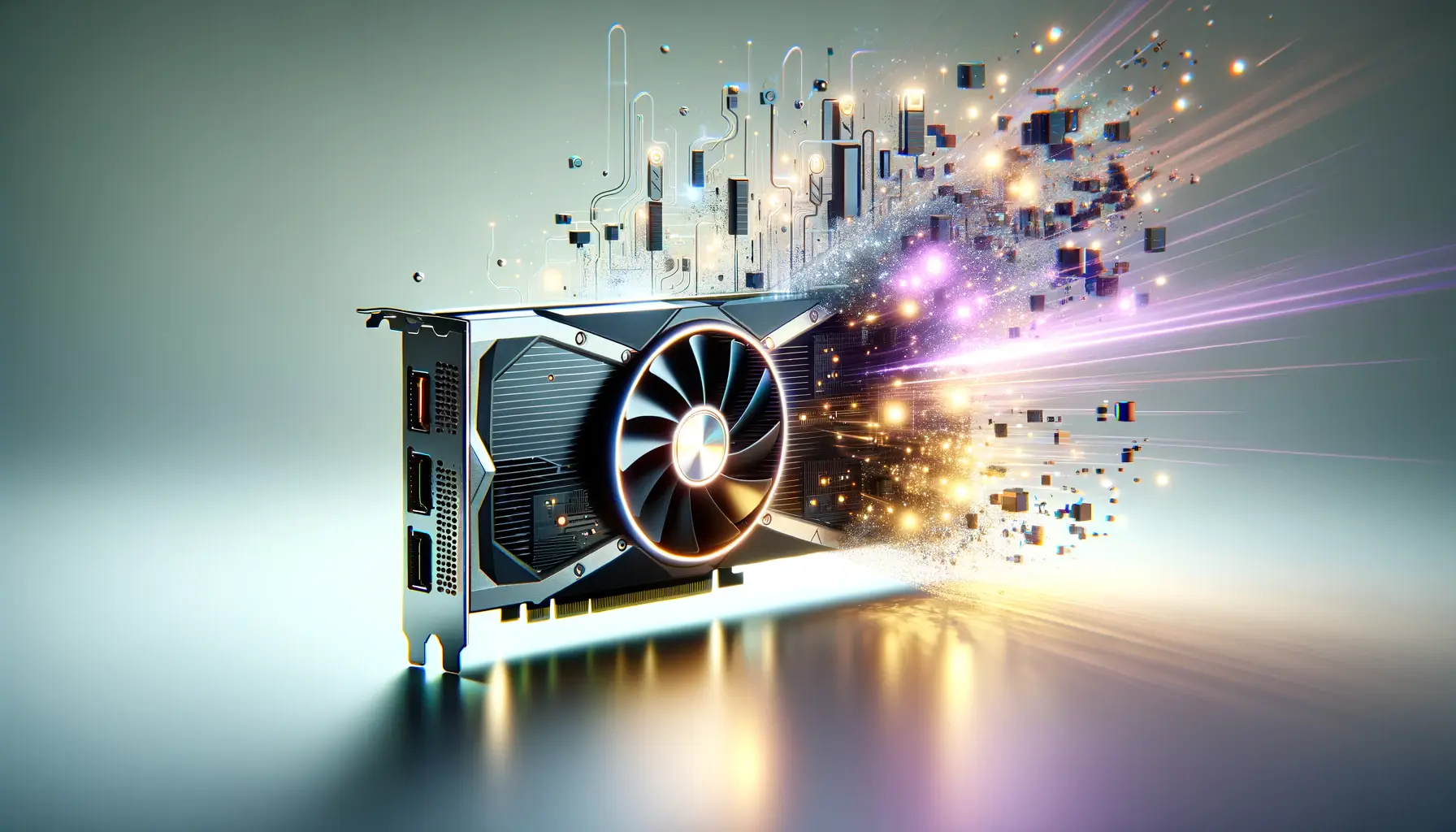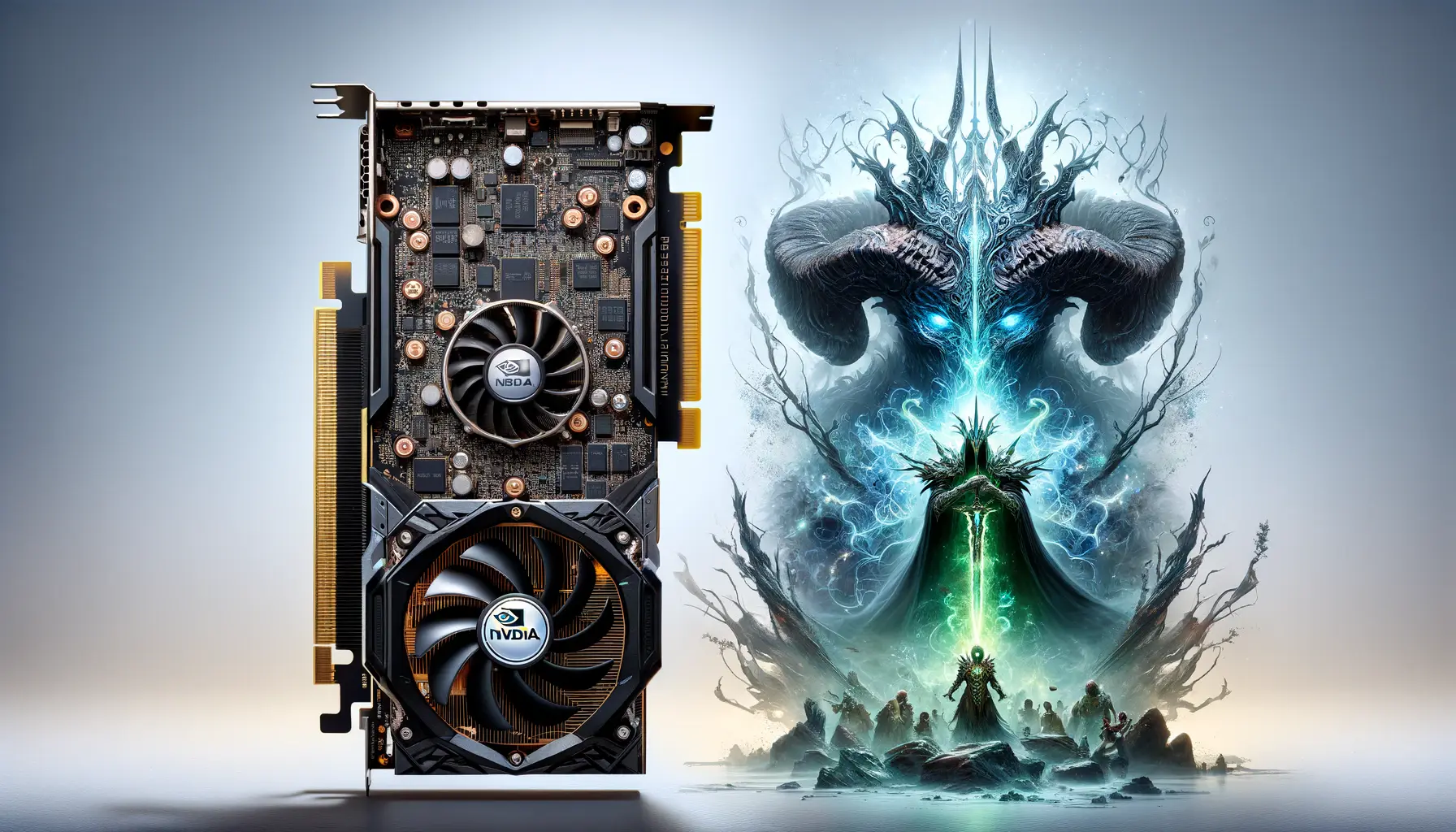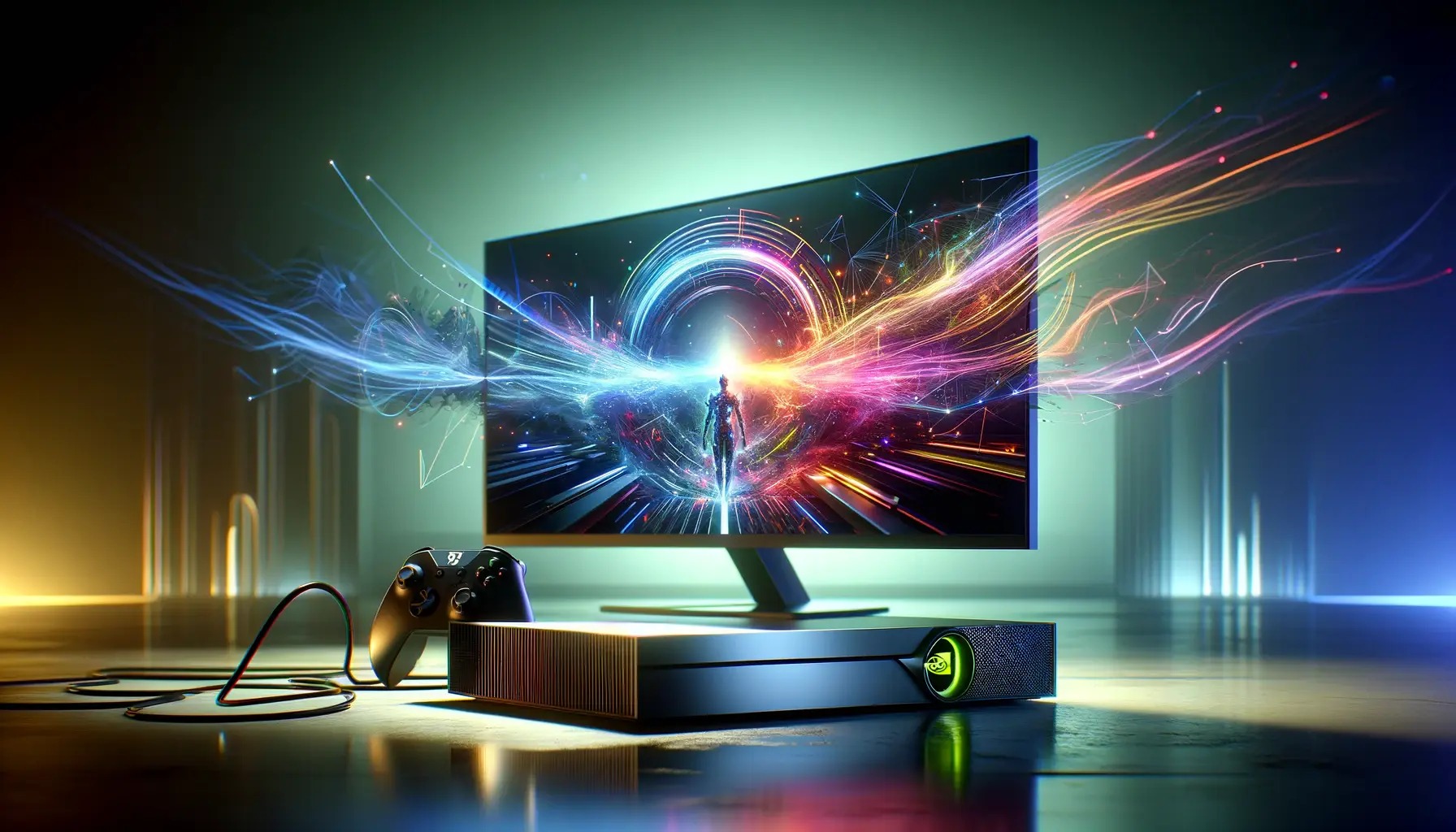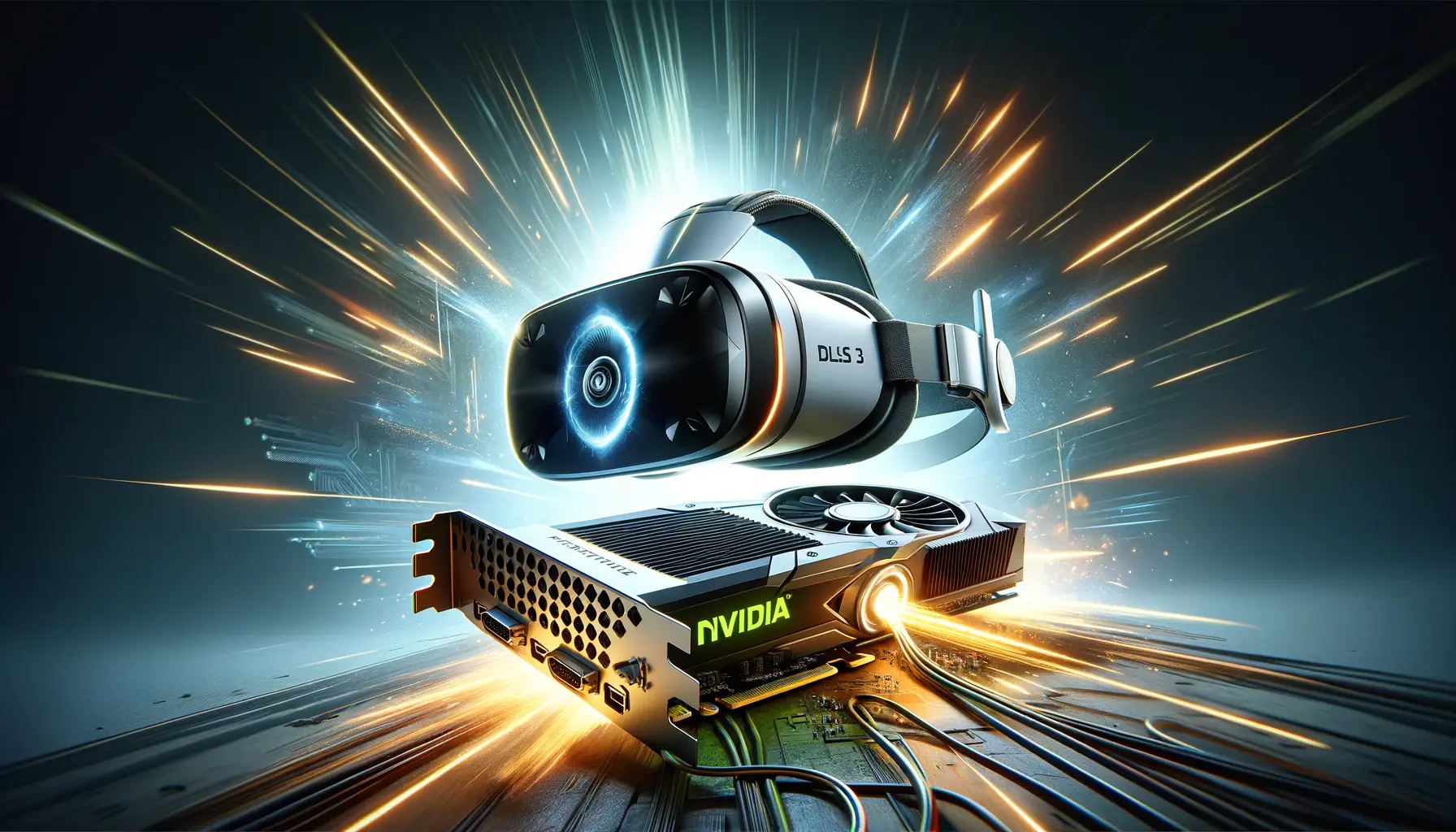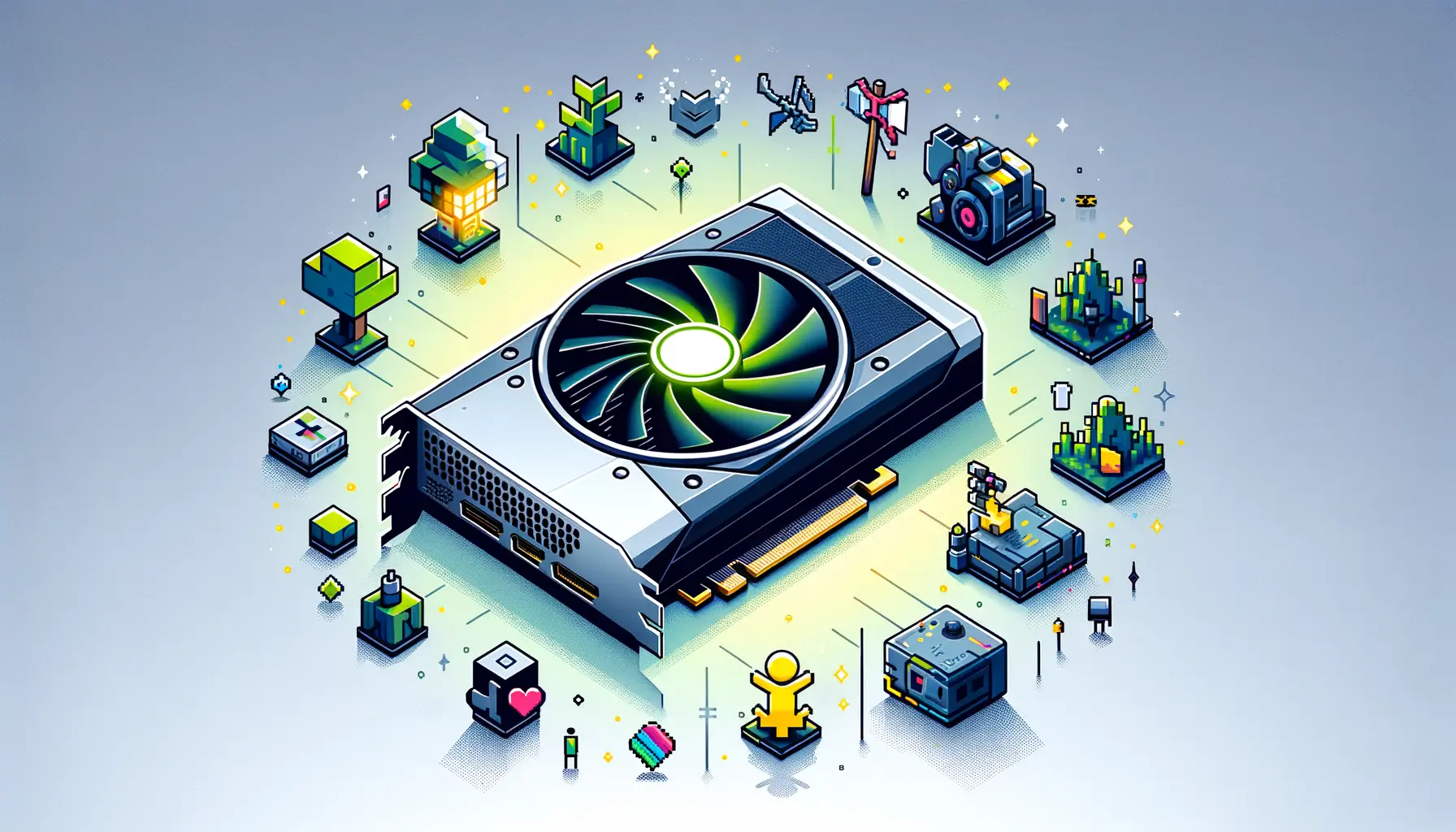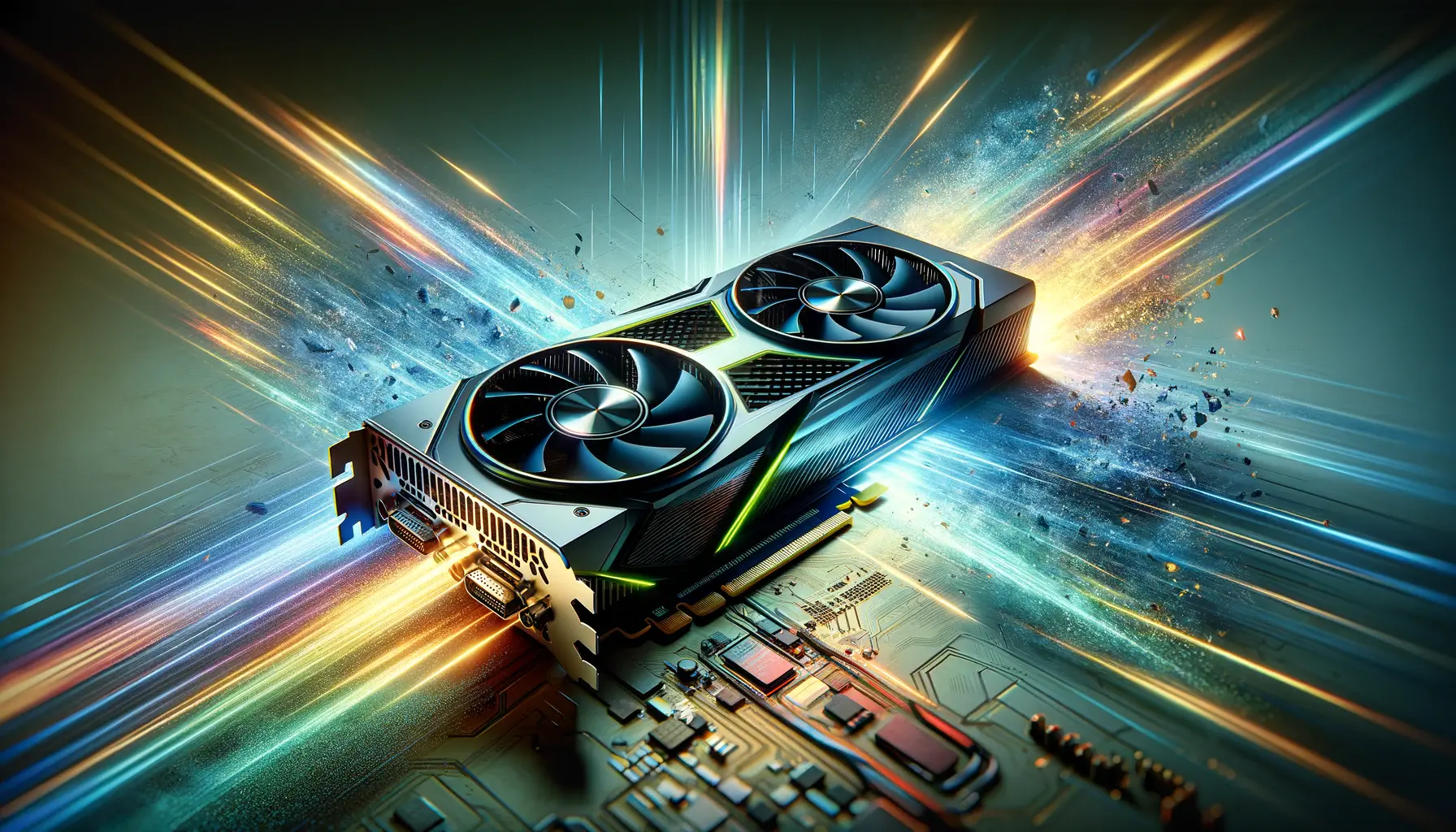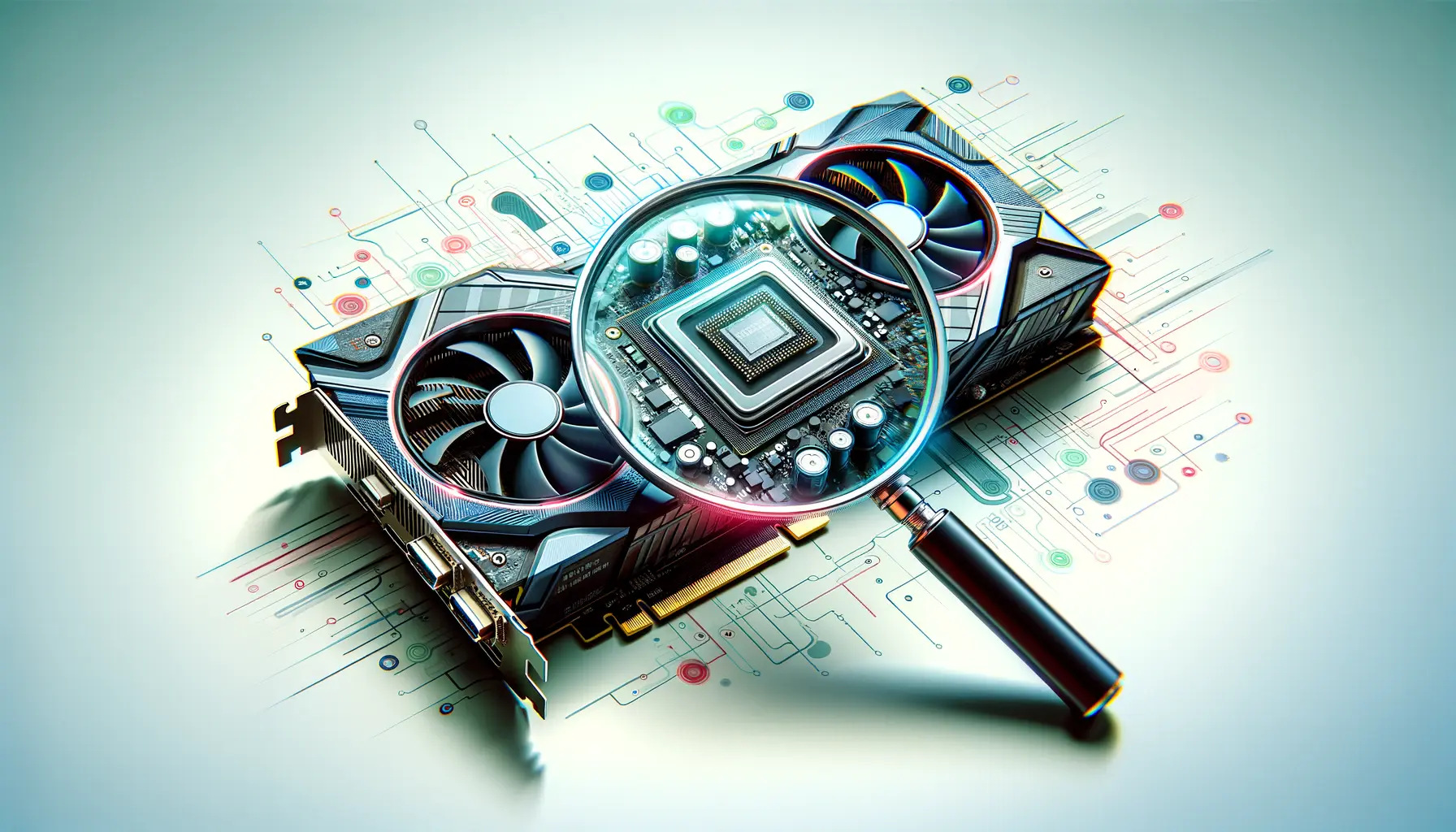The realm of gaming and graphical rendering has been revolutionized with the introduction of NVIDIA’s Deep Learning Super Sampling (DLSS) technology, particularly with its latest iteration, DLSS 3.
This groundbreaking technology not only enhances gaming visuals but also significantly boosts performance, making it a pivotal innovation in the world of computer graphics.
As we delve into the intricacies of DLSS 3, it’s essential to understand its impact on pricing and availability, which are crucial factors for both gamers and developers alike.
DLSS 3, leveraging the power of AI and machine learning, represents a leap forward in rendering technology.
By utilizing dedicated Tensor Cores found in NVIDIA’s GeForce RTX series, DLSS 3 offers unparalleled image quality and performance enhancements.
This technology is not just about making games look better; it’s about redefining what’s possible in real-time rendering.
The anticipation around DLSS 3’s pricing and availability is high, given its potential to transform gaming experiences and its implications for the broader graphics industry.
- Understanding DLSS 3 Technology
- DLSS 3 Pricing Insights
- Availability and Compatibility of DLSS 3
- DLSS 3 in Gaming: A New Era of Performance
- Comparing DLSS 3 with Previous Versions
- Future Prospects of DLSS 3
- DLSS 3 and the Competitive Landscape
- Conclusion: The Future of Gaming with NVIDIA DLSS 3
- NVIDIA DLSS 3: Frequently Asked Questions
Understanding DLSS 3 Technology
What Makes DLSS 3 Unique
At the heart of DLSS 3 lies its ability to use artificial intelligence to upscale images in real-time, allowing for higher frame rates without compromising on visual fidelity.
This is achieved through a process called “deep learning,” where the AI is trained on high-resolution images to learn how to produce similar quality from lower-resolution inputs.
The result is a smoother, more immersive gaming experience, even on displays with higher resolutions.
The technology’s uniqueness also stems from its integration with NVIDIA’s latest GPU architecture, Ada Lovelace.
This synergy between hardware and software enables DLSS 3 to not only generate new frames through AI but also to predict and render future frames, reducing latency and improving responsiveness.
Such advancements underscore DLSS 3’s role in pushing the boundaries of gaming performance and visual quality.
Impact on Gaming Performance
DLSS 3’s impact on gaming performance is profound.
By offloading a significant portion of the rendering workload to AI, games can run at higher frame rates without the need for more powerful hardware.
This means that gamers can enjoy the latest titles at ultra settings without having to invest in top-of-the-line GPUs.
The technology also opens up new possibilities for game developers, who can now create more detailed and expansive game worlds without worrying about alienating players with less powerful systems.
Moreover, DLSS 3 enhances the gaming experience by improving image quality.
The AI-driven upscaling process ensures that even when running games at lower native resolutions, the output appears crisp and detailed, comparable to higher resolutions.
This not only makes games more visually appealing but also more immersive, as players can enjoy smooth gameplay without distractions from graphical artifacts or performance issues.
DLSS 3 represents a significant leap forward in gaming technology, offering both performance enhancements and superior image quality, all while making high-end gaming more accessible to a broader audience.
DLSS 3 Pricing Insights
The pricing strategy for NVIDIA’s DLSS 3 technology is a critical aspect that affects its adoption and overall success in the market.
Unlike traditional software or hardware products, DLSS 3 is not sold separately but comes as a feature within NVIDIA’s RTX series graphics cards.
This integration means that the pricing of DLSS 3 is inherently tied to the GPUs that support it, influencing consumer decisions and market dynamics.
Understanding the pricing model for DLSS 3 requires a look at the broader context of NVIDIA’s RTX graphics cards.
These GPUs, known for their advanced ray tracing and AI capabilities, are positioned at various price points to cater to a wide range of consumers, from casual gamers to professional content creators.
DLSS 3, as a feature of these GPUs, adds value without directly impacting the cost to the consumer.
Factors Influencing DLSS 3 GPU Pricing
- Manufacturing Costs: The complexity of the RTX series GPUs, especially with the inclusion of dedicated Tensor Cores for DLSS 3, influences their manufacturing cost and, by extension, their retail price.
- Market Demand: High demand for gaming and professional GPUs can drive up prices, especially in markets with limited supply. DLSS 3’s appeal can contribute to this demand, indirectly affecting pricing.
- Competition: The pricing strategies of competitors also play a role. NVIDIA adjusts its prices based on the market landscape, ensuring that DLSS 3-equipped GPUs remain competitive.
- Technological Advancements: As NVIDIA continues to innovate, newer generations of GPUs with enhanced DLSS capabilities may be introduced at different price points, reflecting the cost of technological progress.
How Pricing Affects Consumers
The pricing of DLSS 3-enabled GPUs impacts consumers in several ways.
For gamers, the value proposition of higher frame rates and improved image quality without the need for upgrading to the most expensive hardware is compelling.
This democratizes access to high-quality gaming experiences, making cutting-edge technology accessible to a broader audience.
For professionals in fields such as 3D rendering and AI research, the efficiency gains from DLSS 3 can justify the investment in higher-priced GPUs.
The time saved in rendering workloads and the potential for more complex simulations can offer significant returns, making the pricing of DLSS 3-equipped GPUs a consideration in budgeting for technology upgrades.
The pricing strategy for DLSS 3, while indirectly applied through GPU sales, plays a crucial role in its adoption. It balances the need for innovation with market accessibility, ensuring that the benefits of DLSS 3 reach a wide range of users.
Availability and Compatibility of DLSS 3
The availability of NVIDIA’s DLSS 3 technology is closely tied to the company’s latest RTX series graphics cards, which are equipped with the necessary hardware to support this advanced feature.
The rollout of DLSS 3 has been strategic, ensuring that it supports a wide range of games and applications to benefit as many users as possible.
Compatibility with existing and upcoming titles is a key focus, as it determines the real-world utility of DLSS 3 for enhancing gaming and rendering experiences.
DLSS 3’s deployment across various platforms and games is a testament to NVIDIA’s commitment to making its benefits universally accessible.
However, the technology’s availability is subject to the adoption by game developers and the integration within software applications.
This section explores the factors influencing DLSS 3’s availability and compatibility, shedding light on its impact on the gaming community and beyond.
Key Factors Influencing Availability
- Hardware Requirements: DLSS 3 is available exclusively on NVIDIA’s RTX 30 and 40 series GPUs, which feature the proprietary Tensor Cores necessary for its AI-driven processes.
- Software Support: The integration of DLSS 3 into games and applications requires developers to adopt NVIDIA’s SDK. The company provides extensive support and resources to facilitate this integration.
- Game Developer Adoption: The willingness of game developers to incorporate DLSS 3 into their titles significantly affects its availability. Popular games adopting DLSS 3 can drive wider acceptance and demand for compatible GPUs.
Expanding Compatibility Across Titles
NVIDIA works closely with developers to ensure DLSS 3 is compatible with a broad spectrum of games, from blockbuster titles to indie gems.
This collaboration extends to various genres, ensuring that whether you’re into fast-paced shooters, immersive RPGs, or detailed simulation games, you can benefit from DLSS 3’s enhancements.
The list of DLSS 3-compatible games is continuously growing, reflecting NVIDIA’s ongoing efforts to expand its reach.
Moreover, beyond gaming, DLSS 3 finds applications in professional software used for tasks such as 3D rendering, video editing, and AI research.
Its compatibility with these applications demonstrates the versatility of DLSS 3, making it a valuable feature for a wide range of users beyond the gaming community.
DLSS 3’s availability and compatibility are crucial for its adoption and impact. By ensuring it supports a wide range of hardware and software, NVIDIA maximizes the technology’s potential benefits for users across different domains.
DLSS 3 in Gaming: A New Era of Performance
The introduction of DLSS 3 by NVIDIA has marked the beginning of a new era in gaming performance and visual fidelity.
This technology, by harnessing the power of artificial intelligence, has redefined what gamers can expect from their gaming experiences.
DLSS 3 enables games to run at higher frame rates while maintaining, or even improving, the quality of the game’s visuals.
This leap in performance is particularly significant for gamers who are always in pursuit of smoother and more immersive gameplay without compromising on graphic details.
DLSS 3’s impact on gaming goes beyond just the technical enhancements.
It influences game design and development, allowing creators to push the boundaries of visual complexity and in-game physics, knowing that DLSS 3 can handle the increased demands without burdening the player’s hardware excessively.
This section delves into how DLSS 3 is shaping the future of gaming, highlighting its benefits and the transformative effect it has on both the gaming industry and the gaming community.
Enhanced Gaming Experiences
- Higher Frame Rates: By intelligently generating frames, DLSS 3 allows games to run at much higher frame rates than would be possible with traditional rendering techniques. This results in smoother gameplay, which is especially beneficial in fast-paced genres where reaction time is crucial.
- Improved Visual Quality: DLSS 3 enhances the visual quality of games by upscaling images in a way that mimics higher resolutions. This means gamers can enjoy crisp, detailed visuals without needing the most powerful hardware on the market.
- Reduced Latency: The predictive capabilities of DLSS 3 help in reducing input lag, making games feel more responsive. This improvement in latency is a game-changer for competitive gaming, where every millisecond counts.
Transforming Game Development
The advent of DLSS 3 is also transforming the landscape of game development.
Developers now have more freedom to experiment with advanced graphics and complex game mechanics without worrying about alienating players with less powerful PCs.
This democratization of high-quality gaming experiences means that more players can enjoy the latest titles at their best, regardless of their hardware setup.
Furthermore, DLSS 3 encourages innovation in game design by lifting some of the technical constraints that previously limited developers.
With DLSS 3, the focus can shift from optimizing performance to enhancing creativity and storytelling, leading to richer and more engaging gaming experiences.
DLSS 3 is not just a technological advancement; it’s a catalyst for change in the gaming industry, driving improvements in game performance, visual quality, and development practices.
Comparing DLSS 3 with Previous Versions
NVIDIA’s DLSS technology has evolved significantly since its inception, with each version bringing substantial improvements in performance, image quality, and compatibility.
DLSS 3 represents the latest milestone in this evolutionary journey, setting a new standard for AI-powered graphics enhancement.
This section provides a comparative analysis of DLSS 3 against its predecessors, highlighting the advancements that define its superiority and the impact these have on the user experience.
Understanding the differences between DLSS 3 and earlier versions is crucial for appreciating the technological leap NVIDIA has achieved.
From its initial launch to the present, DLSS has transformed from a promising feature into a must-have technology for gamers and professionals alike.
Let’s delve into the specifics that distinguish DLSS 3 from DLSS 2 and its original version, shedding light on the continuous innovation at NVIDIA.
Performance Enhancements
- Frame Generation: Unlike DLSS 2, which focused on upscaling images to improve performance, DLSS 3 introduces the concept of frame generation. This allows for a significant boost in frame rates by generating additional frames, enhancing fluidity and responsiveness in games.
- AI Processing: DLSS 3 utilizes more advanced AI algorithms compared to its predecessors, enabling more accurate and efficient image reconstruction. This leap in AI capabilities results in better image quality at higher performance levels.
- Latency Reduction: DLSS 3 addresses one of the critical aspects of gaming – latency. By predicting and rendering frames more efficiently, DLSS 3 reduces input lag, offering a more responsive gaming experience than DLSS 2 and the original DLSS could achieve.
Image Quality Improvements
The evolution of DLSS technology has consistently aimed at balancing performance gains with image quality.
DLSS 3 takes this balance to new heights by employing sophisticated AI models that have been trained on a vast array of high-quality game footage.
This training enables DLSS 3 to produce images that are not only upscaled but also refined, with enhanced details and reduced artifacts compared to earlier versions.
Furthermore, DLSS 3’s ability to generate entirely new frames contributes to a smoother visual experience, making it difficult to distinguish between native rendering and AI-enhanced images.
This seamless integration of performance and quality is a testament to the advancements NVIDIA has made with DLSS 3.
The transition from DLSS 2 to DLSS 3 exemplifies NVIDIA’s commitment to pushing the boundaries of gaming technology, offering unprecedented improvements in both performance and image quality.
Future Prospects of DLSS 3
The advent of DLSS 3 has not only reshaped the present landscape of gaming and graphical rendering but also set a new trajectory for the future of these fields.
As we look ahead, the potential applications and advancements of DLSS 3 technology extend far beyond current implementations.
This forward-looking perspective explores the future prospects of DLSS 3, considering its impact on gaming, professional graphics work, and even emerging technologies like virtual reality (VR) and augmented reality (AR).
The continuous development of DLSS technology by NVIDIA signals a commitment to innovation that could redefine the standards of visual computing.
With each iteration, DLSS has bridged the gap between the dream of photorealistic real-time rendering and the reality of today’s hardware capabilities.
DLSS 3, with its AI-driven approach, represents a significant leap towards achieving these aspirations.
Expanding the Reach of DLSS 3
- Broader Game Support: NVIDIA is likely to continue collaborating with developers to integrate DLSS 3 into a wider array of games, enhancing performance and visual quality across genres and platforms.
- Professional and Creative Applications: Beyond gaming, DLSS 3’s potential in professional software for tasks such as 3D modeling, video editing, and architectural visualization is immense. Its ability to accelerate rendering processes without compromising quality could revolutionize these industries.
- Integration with VR and AR: The low-latency and high-performance characteristics of DLSS 3 make it an ideal candidate for VR and AR applications, where immersive experiences depend on seamless, high-quality visuals.
Technological Innovations and Challenges
As DLSS technology evolves, future versions of DLSS may incorporate even more sophisticated AI models and algorithms, further enhancing performance and image quality.
However, this progression also presents challenges, such as the need for more powerful hardware and the complexity of integrating such advanced technology into a wide range of applications.
Moreover, the success of DLSS 3 and its successors will depend on NVIDIA’s ability to address these challenges while continuing to push the boundaries of what’s possible in real-time rendering.
The ongoing research and development in AI and machine learning offer promising avenues for overcoming these obstacles, suggesting a bright future for DLSS technology.
The future of DLSS 3 and beyond is poised to transform the digital world, offering unprecedented opportunities for enhancing visual experiences across gaming, professional applications, and emerging technologies.
DLSS 3 and the Competitive Landscape
The introduction of DLSS 3 by NVIDIA has not only advanced the field of real-time graphics rendering but also significantly altered the competitive landscape within the graphics processing industry.
As other companies strive to match or surpass NVIDIA’s achievements, the development of similar or alternative technologies is accelerating.
This competitive dynamic fosters innovation, pushing the boundaries of what’s possible in gaming and professional graphics.
This section examines how DLSS 3 positions NVIDIA within the competitive landscape and the potential responses from competitors.
DLSS 3’s impact extends beyond NVIDIA’s product lineup, influencing the strategies of other tech giants and startups alike.
As the technology sets new standards for performance and image quality, competitors are compelled to offer comparable solutions to stay relevant in the market.
This scenario benefits consumers and professionals by driving technological advancements and making high-quality graphics more accessible.
Responses from Competitors
- Development of Similar Technologies: Competitors are likely to invest in research and development to create their versions of AI-driven rendering technologies. These efforts could lead to a variety of solutions that offer different benefits or target specific niches within the market.
- Partnerships and Collaborations: To compete with NVIDIA’s DLSS 3, other companies may seek partnerships with game developers and software providers. These collaborations can help integrate alternative technologies into a broader range of applications, enhancing their visibility and adoption.
- Focus on Open Standards: Some competitors might emphasize the development of open standards for AI-driven graphics enhancement. This approach could appeal to developers and users who prefer more flexible and interoperable solutions, as opposed to proprietary technologies like DLSS 3.
Driving Innovation in the Industry
The competitive pressure introduced by DLSS 3 encourages continuous innovation within the graphics processing industry.
As companies strive to match or exceed the capabilities of DLSS 3, they contribute to a rapidly evolving technology landscape.
This environment of competition and innovation results in faster advancements in graphics technology, benefiting a wide range of applications from gaming to professional visualization.
Moreover, the race to develop the next generation of graphics enhancement technologies ensures that the future of gaming and professional graphics will be marked by increasingly realistic and immersive experiences.
As NVIDIA and its competitors push forward, the ultimate winners are the users, who gain access to ever-improving visual technologies.
While DLSS 3 sets a high bar, the competitive response it elicits is crucial for the continued growth and evolution of the graphics technology industry, driving forward a future where the limits of visual fidelity are constantly being redefined.
Conclusion: The Future of Gaming with NVIDIA DLSS 3
The journey through the intricacies of NVIDIA DLSS 3, from its pricing and availability to its transformative impact on the gaming and graphics industry, underscores a pivotal shift in digital visual experiences.
DLSS 3, with its advanced AI-driven capabilities, not only enhances gaming performance and visual fidelity but also sets a new benchmark for the future of real-time rendering technologies.
As we’ve explored the various dimensions of DLSS 3, it’s clear that its influence extends beyond mere technical specifications, fostering a broader ecosystem of innovation and competition.
Revolutionizing Gaming Experiences
NVIDIA DLSS 3 has redefined what gamers can expect from their hardware, offering unprecedented improvements in frame rates and image quality without the need for prohibitively expensive upgrades.
This democratization of high-quality gaming experiences ensures that the latest titles are more accessible, immersive, and visually stunning than ever before.
The technology’s ability to predict and render future frames reduces latency, further enhancing the responsiveness and fluidity of gameplay, which is crucial for both casual and competitive gamers.
Implications for Game Development
The advent of DLSS 3 also presents new opportunities and challenges for game developers.
With the capability to push graphical boundaries without compromising performance, developers are encouraged to explore new realms of creativity and innovation.
This could lead to a new era of game design, where the focus shifts from optimizing for hardware limitations to prioritizing artistic vision and immersive storytelling.
The widespread adoption of DLSS 3 could significantly impact the development process, making advanced visual effects and complex simulations more feasible and cost-effective.
Shaping the Competitive Landscape
- The introduction of DLSS 3 has catalyzed a wave of innovation across the graphics processing industry, prompting competitors to develop similar or alternative technologies.
- As the market responds to NVIDIA’s advancements, we can expect a surge in collaborative efforts, with companies partnering to integrate cutting-edge rendering technologies into a wider array of games and applications.
- The focus on open standards and interoperability may also gain momentum, offering developers and consumers more flexibility and choice in how they experience digital content.
In conclusion, NVIDIA DLSS 3 is not just a technological achievement; it’s a visionary leap forward that promises to redefine the landscape of gaming and professional graphics.
By balancing performance enhancements with superior image quality, DLSS 3 paves the way for future innovations in real-time rendering.
As we look to the horizon, the ongoing evolution of DLSS technology holds the potential to unlock new possibilities for gamers, developers, and the entire industry, ensuring that the future of digital visual experiences is brighter and more accessible than ever before.
NVIDIA DLSS 3: Frequently Asked Questions
Explore the most common inquiries about NVIDIA DLSS 3, providing insights into its features, compatibility, and impact on gaming.
DLSS 3 is NVIDIA’s latest AI-driven rendering technology, enhancing gaming performance and visual quality by generating additional frames and improving resolution.
DLSS 3 is supported exclusively on NVIDIA’s GeForce RTX 40 Series GPUs, leveraging their advanced AI capabilities for optimal performance.
DLSS 3 boosts gaming performance by using AI to generate frames and upscale images, resulting in higher frame rates and smoother gameplay.
No, DLSS 3 is designed for the Ada Lovelace architecture and is only compatible with GeForce RTX 40-series GPUs.
DLSS 3 is rapidly being adopted in new and existing games, with support growing for a wide range of titles across genres.
DLSS 3 introduces frame generation and improved AI algorithms, offering significant performance and quality enhancements over earlier versions.
Yes, DLSS 3 benefits a wide variety of games, especially those with high graphical demands, by improving frame rates and visual fidelity.
Enabling DLSS 3 requires a compatible NVIDIA RTX GPU and a game that supports the technology, usually found in the graphics settings.


